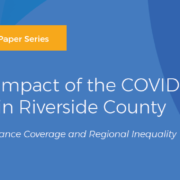COVID-19 and the Digital Divide in Virtual Learning
In collaboration with Ong & Associates, this report by CNK examines the digital divide in virtual learning during the latter part of the 2019‒20 academic year when the COVID-19 pandemic forced schools to end face-to-face teaching. The analysis uses data from the U.S. Census Household Pulse Survey (HPS) covering the 12-week period from April 23 to July 2 to assess the pattern and trajectory of availability to computers and Internet, focusing on racial, income, and other systematic disparities. The digital divide predates the current public-health crisis, but the findings show that the pandemic exacerbated the digital divide among minority and low-income households. Major findings include:
- Limited computer and Internet service available for children’s educational purposes increased.
- All racial groups (White, Black, Asian, and Hispanic) experienced a significant increase in limited availability, however, these increases were largest for Hispanics and Blacks.
- Low-income households were most impacted by the unavailability, while households at the other end of the economic ladder experienced minor growth.
- The lack of access to technology was tied to the parents’ educational attainment.
- Younger households faced the most technological barriers, and all age groups experienced an increase over time.
The observed disparities in limited technological resources for virtual learning probably is not just a current and temporary phenomenon. Unchecked, the digital inequality threatens to widen the racial and income gap in educational achievement and contributes to a reproduction of intergenerational inequality.
Access the full report here >>> COVID-19 and the Digital Divide in Virtual Learning












Leave a Reply
Want to join the discussion?Feel free to contribute!